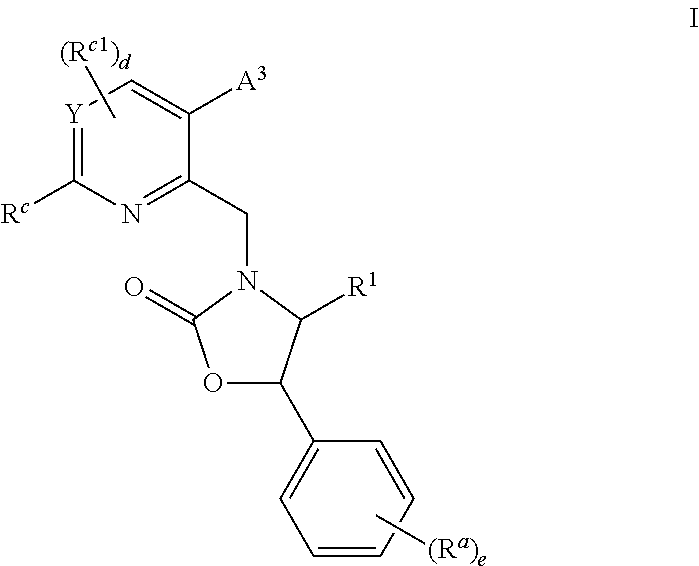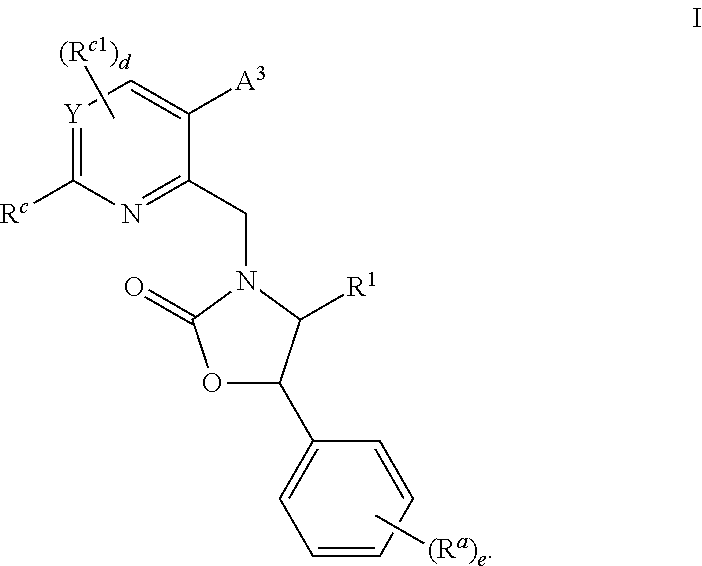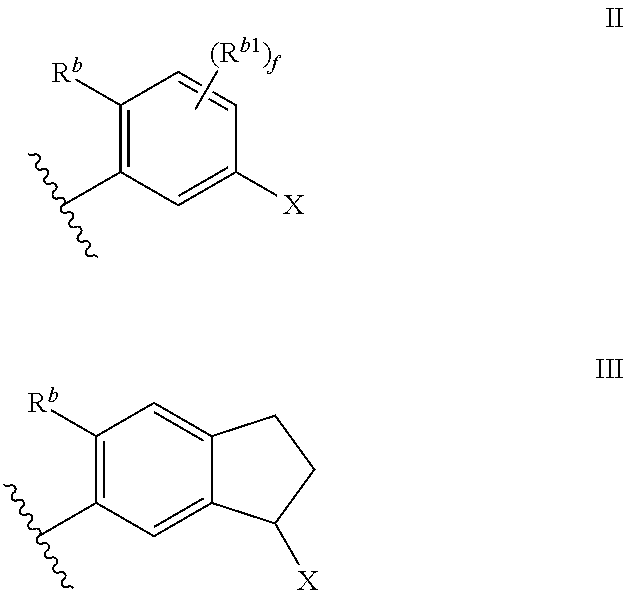Cyclic Amine Substituted Oxazolidinone CETP Inhibitor
a technology of oxazolidinone and cetp inhibitor, which is applied in the field of chemical compounds, can solve the problems of statins only achieving a risk reduction of approximately one-third, and the burden of health care systems is truly enormous
- Summary
- Abstract
- Description
- Claims
- Application Information
AI Technical Summary
Problems solved by technology
Method used
Image
Examples
example 1
[0359]
Methyl 3-{3-[6-azetidin-1-yl-2-({(4S,5R)-5-[3,5-bis(trifluoromethyl)phenyl]-4-methyl-2-oxo-1,3-oxazolidin-3-yl}methy)pyridin-3-yl]-4-methoxyphenyl}propanoate
[0360]A flask was charged with (4S,5R)-3-[(6-azetidin-1-yl-3-bromopyridin-2-yl)methyl]-5-[3,5-bis(trifluoromethyl)phenyl]-4-methyl-1,3-oxazolidin-2-one (134 mg, 0.249 mmol), methyl 3-[4-methoxy-3-(4,4,5,5-tetramethyl-1,3,2-dioxaborolan-2-yl)phenyl]propanoate (100 mg, 0.312 mmol), 1,1′-bis(di-t-butylphosphino)ferrocene palladium dichloride (8.11 mg, 0.012 mmol), and THF (3 mL). The reaction was degassed with N2 then 1M K2CO3 (3 mL, 3.00 mmol) was added. The reaction was stirred at room temperature for 45 min. The reaction was then diluted with ethyl acetate (20 mL), washed with water (2×15 mL) and brine (15 mL), dried over sodium sulfate, filtered, and concentrated. The residue was purified by flash chromatography on silica gel (0 to 100% ethyl acetate / hexanes) to afford methyl 3-{3-[6-azetidin-1-yl-2-({(4S,5R)-5-[3,5-bis(t...
example 39
[0362]
Methyl 3-{3-[6-azetidin-1-yl-2-({(4S,5R)-5-[3,5-bis(trifluoromethyl)phenyl]-4-methyl-2-oxo-1,3-oxazolidin-3-yl}methyl)-4-methylpyridin-3-yl]-4-methoxyphenyl}propanoate
[0363]A flask was charged with (4S,5R)-3-[(6-azetidin-1-yl-3-bromo-4-methylpyridin-2-yl)methyl]-5-[3,5-bis(trifluoromethyl)phenyl]-4-methyl-1,3-oxazolidin-2-one (460 mg, 0.833 mmol), methyl 3-[4-methoxy-3-(4,4,5,5,5-tetramethyl-1,3,2-dioxaborolan-2-yl)phenyl]propanoate (347 mg, 1.083 mmol), 1,1′-bis(di-t-butylphosphino)ferrocene palladium dichloride (27.1 mg, 0.042 mmol), and THF (9 mL) under nitrogen. The reaction was degassed with nitrogen for 5 minutes and then 1M potassium carbonate (9 mL, 9.00 mmol) was added via syringe. The reaction was stirred at room temperature for 45 minutes. The reaction was then diluted with ethyl acetate (50 mL), washed with water (2×25 mL) and brine (25 mL), dried over sodium sulfate, filtered, and concentrated. The residue was purified by flash chromatography on silica gel (0 to 1...
example 45
[0365]
Methyl 3-{3-[6-azetidin-1-yl-2-({(4S,5R)-5-[3,5-bis(trifluoromethyl)phenyl]-4-methyl-2-oxo-1,3-oxazolidin-3-yl}methyl-5-bromo-4-methylpyridin-3-yl]-4-methoxyphenyl}propanoate
[0366]An oven dried flask was charged with methyl 3-{3-[6-azetidin-1-yl-2-({(4S,5R)-5-[3,5-bis(trifluoromethyl)phenyl]-4-methyl-2-oxo-1,3-oxazolidin-3-yl}methyl)-4-methylpyridin-3-yl]-4-methoxyphenyl}propanoate (atropisomer A) (19.1 mg, 0.029 mmol) and CH2Cl2 (1 mL) under nitrogen. The solution was cooled to −10° C., N-bromosuccinimide (5.1 mg, 0.029 mmol) was added. The reaction was stirred for 15 minutes at −10° C. and then loaded directly onto a silica gel column and purified by flash chromatography on silica gel (0 to 100% ethyl acetate / hexanes) to afford methyl 3-{3-[6-azetidin-1-yl-2-({(4S,5R)-5-[3,5-bis(trifluoromethyl)phenyl]-4-methyl-2-oxo-1,3-oxazolidin-3-yl}methyl)-5-bromo-4-methylpyridin-3-yl]-4-methoxyphenyl}propanoate. LCMS=744.4 and 746.4 (M+H)+. 1H NMR (CDCl3, 500 MHz) δ 7.85 (s, 1H), 7.71 ...
PUM
| Property | Measurement | Unit |
|---|---|---|
| Force | aaaaa | aaaaa |
| Molar density | aaaaa | aaaaa |
| Molar density | aaaaa | aaaaa |
Abstract
Description
Claims
Application Information
 Login to view more
Login to view more - R&D Engineer
- R&D Manager
- IP Professional
- Industry Leading Data Capabilities
- Powerful AI technology
- Patent DNA Extraction
Browse by: Latest US Patents, China's latest patents, Technical Efficacy Thesaurus, Application Domain, Technology Topic.
© 2024 PatSnap. All rights reserved.Legal|Privacy policy|Modern Slavery Act Transparency Statement|Sitemap



